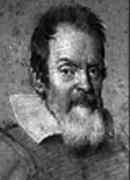Person: Ceva, Giovanni

Giovanni Ceva was an Italian mathematician who rediscovered Menelaus's theorem and proved his own well-known theorem.
Mathematical Profile (Excerpt):
- Giovanni Ceva's cousin, also named Carlo Francesco Ceva, was the Bishop of Tortona.
- We know no details of Ceva's youth, but he does make an intriguing comment that his youth was saddened by "many kinds of misfortune".
- Giovanni Ceva was educated at the Collegio di Brera, a Jesuit college in Milan, where he showed a particular aptitude for science, particularly for mathematics.
- He also studied under Alessandro Marchetti (1633-1714), who succeeded his teacher Giovanni Alfonso Borelli (1608-1679) as professor of mathematics at Pisa in 1679.
- While studying in Pisa, Ceva also met Michelangelo Ricci who, like Rossetti, was a member of the Mathematics-Physics Academy of Rome.
- It is highly likely, therefore, that Ceva spent some time at the Academy in Rome during his two years of residence in Pisa.
- In this administrative position, Ceva was essentially responsible for the economy of Mantua and Montferrat.
- Major government roles did not stop Ceva finding time to pursue his scientific studies, however, for during this period he undertook the work that he wrote up in Opuscula mathematica de potentiis obliquis, de pendulis, de vasis et de fluminibus in 1682.
- In 1683 the Duke of Mantua granted Ceva citizenship of Mantua, showing how important the Duke considered Ceva's contributions to the state.
- Although he was very busy with his duties for the Duke, Ceva continued to undertake mathematical research.
- Ceva continued to undertake research on geometric problems and to work on economic issues, the results of his research being published in the two works of 1710 and 1711, respectively, mentioned below.
- For most of his life Giovanni Ceva worked on geometry.
- Ceva also rediscovered and published Menelaus's theorem in this work.
- That the book was not fully appreciated at the time of its publication is suggested by the fact that only one edition appeared and also by the fact that many of the results in the book were later rediscovered by others who were unaware of Ceva's work.
- The importance of Ceva's discoveries was only fully appreciated when pointed out by Michel Chasles in the 19th century.
- In addition to his work on geometry, Ceva studied applications of mechanics and statics to geometric systems.
- As we mentioned above, Ceva published Opuscula mathematica in 1682.
- In the following year he published De re nummeraria quod fieri potuit, geometrice tractata, one of the first works in mathematical economics; in it Ceva attempted to solve the conditions of equilibrium for the monetary system of a state like Mantua.
- As we have mentioned a number of times, Ceva did important work on hydraulics.
- In his role in the government of Mantua he was able to use his knowledge of hydraulics and argue successfully against a project which proposed to divert the river Reno into the river Po. Ceva put forward his views in the pamphlet Conseguenze del Reno, se coll'aderire al progetto de' Signori Bolognesi, si permettesse in Po grande (1716) but these views were opposed by Eustachio Manfredi who replied with the pamphlet Ragioni del Signor G.
- The controversy continued with Ceva's Replica ...
- The argument was finally settled in Ceva's favour with his final pamphlet on the topic Risposta alle osservazioni del Sig.
Born 1 September 1647, Milan, Hapsburg Empire (now Italy). Died 13 May 1734, Mantua, Hapsburg Empire (now Italy).
View full biography at MacTutor
Tags relevant for this person:
Origin Italy
Thank you to the contributors under CC BY-SA 4.0! 

- Github:
-

- non-Github:
- @J-J-O'Connor
- @E-F-Robertson
References
Adapted from other CC BY-SA 4.0 Sources:
- O’Connor, John J; Robertson, Edmund F: MacTutor History of Mathematics Archive
